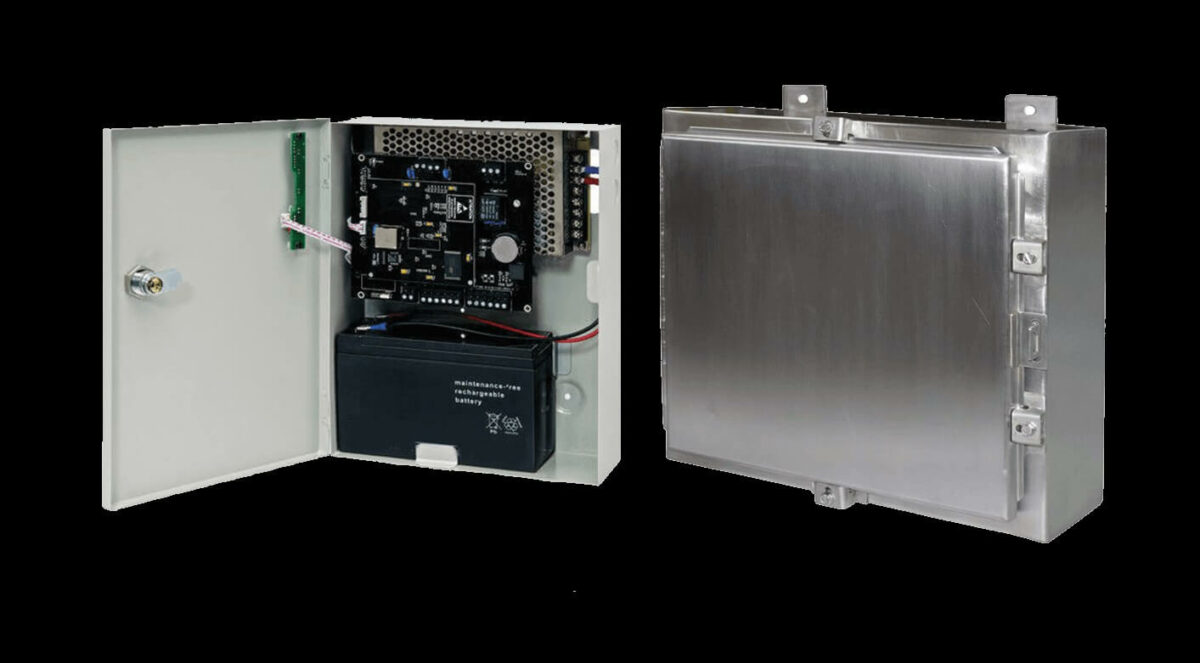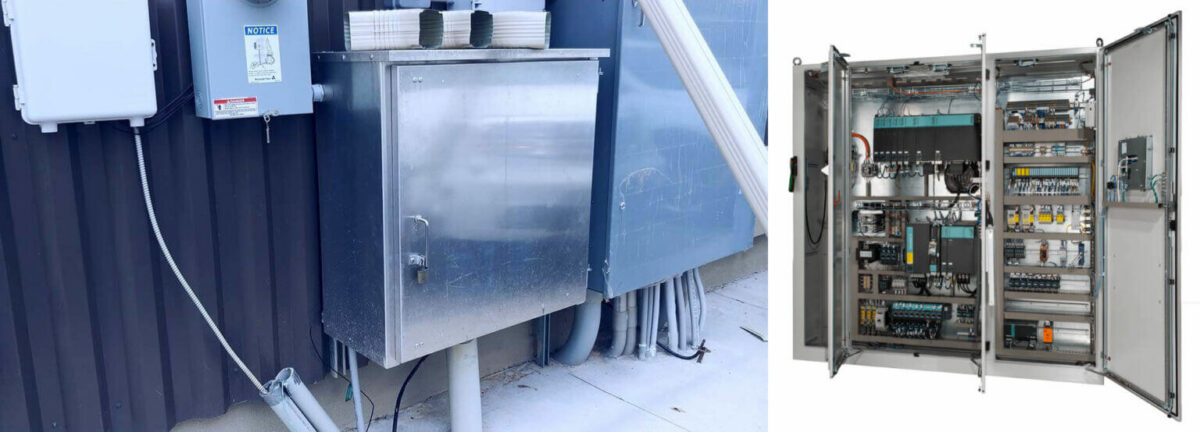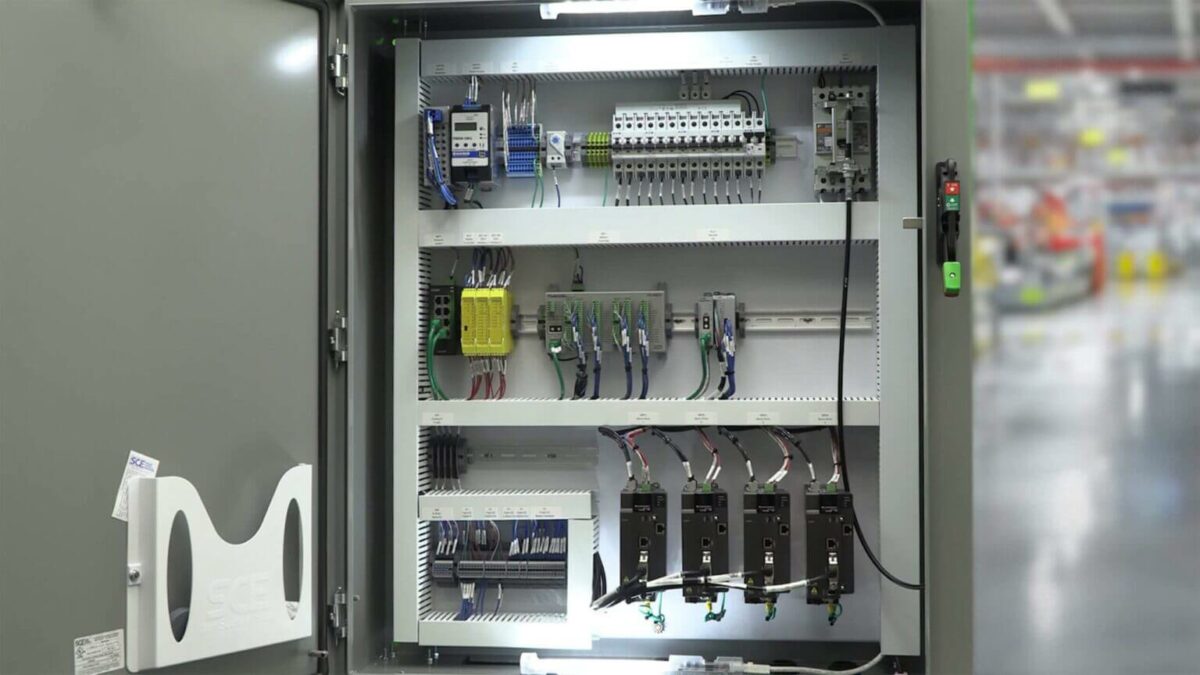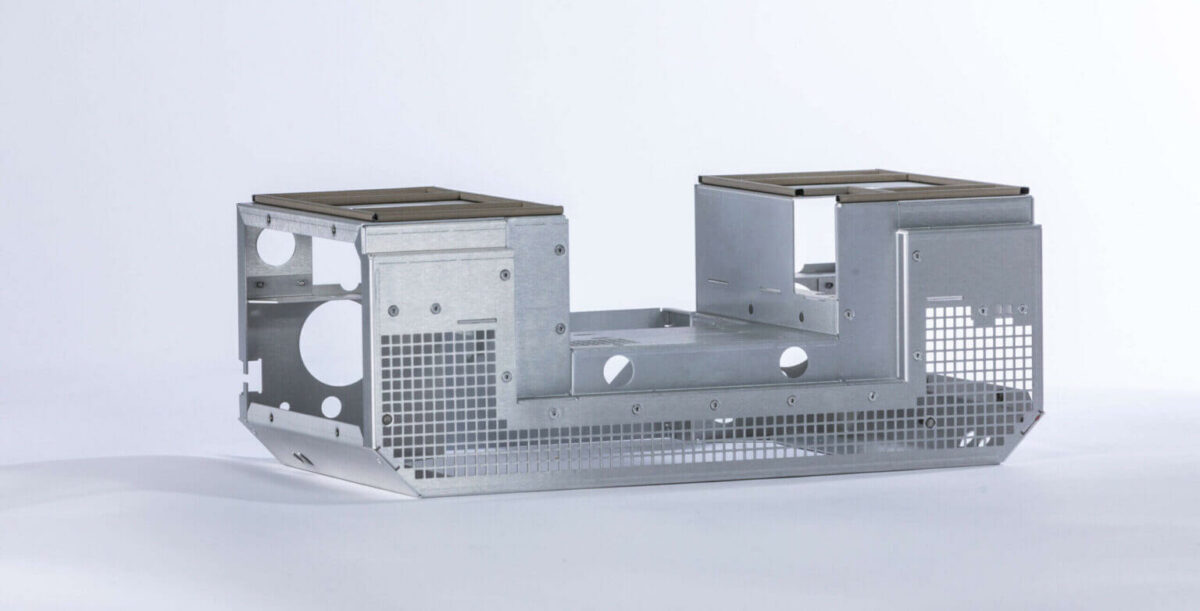
A Complete Guide to Choosing the Right Electrical Enclosure
Selecting the right electrical enclosure can be a complex task due to the wide variety of types, materials, and standards involved. In this guide, we’ll break down everything you need to know to choose an enclosure that meets your application’s performance, protection, and aesthetic requirements.
1. What Is an Electrical Enclosure?
An electrical enclosure is a protective housing designed to contain and safeguard electrical components. These enclosures vary greatly in size, shape, and material—from small handheld boxes to large floor-standing cabinets—and are available in standard or custom configurations.
1.1 Definition
Electrical enclosures are used to house electrical equipment such as circuit breakers, control panels, transformers, or PLCs. They provide physical protection and environmental isolation, helping to ensure safe and reliable operation.
1.2 Why Use an Electrical Enclosure?
Electrical enclosures serve several critical purposes:
- Environmental protection – Shields components from dust, water, chemicals, and temperature extremes.
- Mounting structure – Offers a compact and organized way to install components, especially in tight spaces.
- Aesthetic improvement – Creates a clean and professional appearance for exposed installations.
- Security – Prevents unauthorized access and tampering.
- Noise and EMI reduction – Helps minimize electromagnetic interference and operational noise.
2. Types of Electrical Enclosures
Enclosures are classified by their mounting method, material, and design features. Below are the most common types:
2.1 Based on Mounting:
- Wall-Mounted Enclosures – Ideal for compact applications, easy to install.
- Floor-Standing Enclosures – Used in larger systems with higher power demands.
- Pole-Mounted Enclosures – Installed on utility poles, commonly for outdoor or remote applications.
- Surface-Mounted Enclosures – Mounted onto walls where flush installation isn’t feasible.
- Flush-Mounted Enclosures – Recessed into walls, ideal for residential and commercial aesthetics.
- Free-Standing Enclosures – Portable or stationary, often fitted with wheels or leveling feet.

2.2 Based on Material:
- Metal Enclosures – Durable and corrosion-resistant; made from stainless steel, aluminum, or carbon steel.
- Plastic Enclosures – Lightweight, economical, and non-conductive; typically made from polycarbonate or ABS.
- Fiberglass Enclosures – Strong, weather-resistant, and suitable for harsh environments.
2.3 Custom Enclosures:
Custom-built enclosures can be tailored to meet specific dimensional, functional, and environmental requirements—making them an excellent choice when off-the-shelf solutions fall short.
3. Understanding Enclosure Ratings
Electrical enclosures are rated to indicate how well they protect against environmental factors.
3.1 IP Ratings (Ingress Protection)
Issued by the IEC, IP ratings indicate protection against solids and liquids. For example:
- IP54 – Dust-protected, water splash-resistant.
- IP65 – Dust-tight, resistant to water jets.
3.2 NEMA Ratings
Published by the National Electrical Manufacturers Association (NEMA), these ratings cover protection from dust, water, corrosion, and impact (e.g., NEMA 1 to NEMA 13).
3.3 UL Certification
UL evaluates enclosures for safety and performance, particularly for U.S. markets, through standardized testing.
3.4 CE Marking
Mandatory for products sold in the EU, CE marks ensure compliance with applicable safety and environmental directives.
3.5 RoHS Compliance
RoHS restricts the use of certain hazardous materials. Enclosures must meet these environmental standards, especially in EU and Asia-Pacific markets.

4. NEMA vs. IP Ratings
While both systems assess resistance to environmental conditions:
- IP Ratings use two digits for dust and water protection.
- NEMA Ratings include broader criteria like corrosion and oil resistance.
- IP is IEC-based and global, while NEMA is predominantly used in North America.
5. Electrical Enclosure Structure
5.1 Size
Enclosure size must accommodate all internal components and accessories with adequate clearance for ventilation and wiring.
5.2 Material
Choose based on corrosion resistance, impact resistance, heat tolerance, and weight. Stainless steel offers excellent durability, while plastic is cost-effective and non-conductive.
5.3 Accessories
Common accessories include:
- Cable glands
- DIN rails
- Mounting plates
- Locks and hinges
- Fans, filters, and thermostats

6. Electrical Enclosure Design Considerations
When designing or selecting an electrical enclosure, the following factors are essential:
6.1 Application Environment
Consider whether the enclosure will be used indoors, outdoors, or in a corrosive/industrial setting.
6.2 Material Selection
Different materials suit different environments:
- Aluminum – Lightweight, moderate corrosion resistance
- Stainless Steel – High strength and corrosion resistance
- Plastic/Fiberglass – Lightweight and chemically resistant
6.3 Protection Needs
Account for ingress protection, impact resistance, UV stability, and tamper resistance.

6.4 Cost and Aesthetics
Balance budget with performance. Enclosures in visible areas may require a clean, attractive finish.
7. Electrical Enclosure Manufacturing Process
Manufacturing involves the following stages:
7.1 Specification and Material Selection
Defines size, accessories, rating, and finish based on application.
7.2 Structural Design
CAD modeling and prototype design, ensuring manufacturability and compliance.
7.3 Fabrication
Processes include cutting (laser, waterjet), bending, punching, and welding.
7.4 Assembly and Machining
Fasteners, adhesives, and welds join components. Drilling or slotting enables customization.
7.5 Finishing
Options include:
- Powder coating
- Painting
- Anodizing
- Plating
- Printing or engraving
7.6 Testing
Testing ensures performance against:
- Dust and water (IP rating)
- Corrosion (salt spray)
- Temperature extremes (thermal shock)
- Vibration and humidity
7.7 Packaging
Enclosures are packed securely for transport, including documentation and user guides.
8. How to Choose the Right Enclosure Rating
When selecting the enclosure classification:
- Assess environmental hazards (dust, water, impact, chemicals)
- Match your application to relevant standards (NEMA, IP, UL, CE, RoHS)
- Choose a rating slightly above your minimum need for added safety margin
9. Conclusion
Electrical enclosures are essential for protecting equipment, maintaining safety, and enhancing system reliability. From material selection to rating compliance, every detail matters. Whether you need a basic wall-mounted box or a fully customized industrial cabinet, choosing the right enclosure is key to ensuring long-term performance and safety.
If you’re unsure which option is best for your application, consult with enclosure design experts to find a tailored solution.

Professiona Switchgear supplier and manufacturer
- Zhejiang GONGSHUN Electrical Co.,Ltd (electricgs.com), Our company was founded in the late 1990s, specializing in the production of inflatable cabinets, SF6 inflatable cabinets, and various high and low voltage complete sets of electrical equipment. It has multiple subsidiaries under its jurisdiction, including high-voltage load switch branch, high-voltage circuit breaker branch, high-voltage fuse branch, and technology development branch.Our technical expertise, comprehensive product portfolio and long-term rich experience are helping many customers in need to solve their power problems. We’re happy to help at any time. Whether you need application product advice or technical assistance, our global service team is committed to providing you with the right support. For more technical information about medium voltage earthing switch, feel free to contact us, send an email to gongshun@electric-cn.com
- Our company specializes in producing 12KV-40.5KV series high-voltage electrical products: FZN58, FLN48, FLN36, FZRN25, FZN21, FN18, ZFN16, FN12, FN8, FN7, FN5, XRNT, XRNP, VS1, ZN28, ZW8, ZW32, JN15, GN19, GN22, GN24, GN30, CLXGN15-12, HXGN □ -12, DXG-12 (L), DFW □ -12 high-voltage cable branch box, CLXGN □ -12 (SF6) series inflatable cabinet 12KV and 35KV cable accessories, etc; CLVXP-12 indoor AC high voltage fixed switchgear, CL-SIS-12 compact solid insulated ring main unit, professional assembly Schneider SC6 (SF6) series load switchgear, ABB produced SFG (SF6) series load switchgear and other series products; Distribution and agency of high-voltage load switches and inflatable cabinets produced by Schneider Electric and ABB; Siemens produces the 3AJ1 series of indoor medium voltage vacuum circuit breakers and other related products. The company has a complete range of products and has been operating safely on domestic and international power grids for a long time, receiving unanimous praise from both new and old users. Among them, multiple products such as FZRN25, FN12, FLN36-12, XRNT-12 have been exported to various countries and regions in East Asia, South Asia, Southeast Asia, Africa, and the United States.
